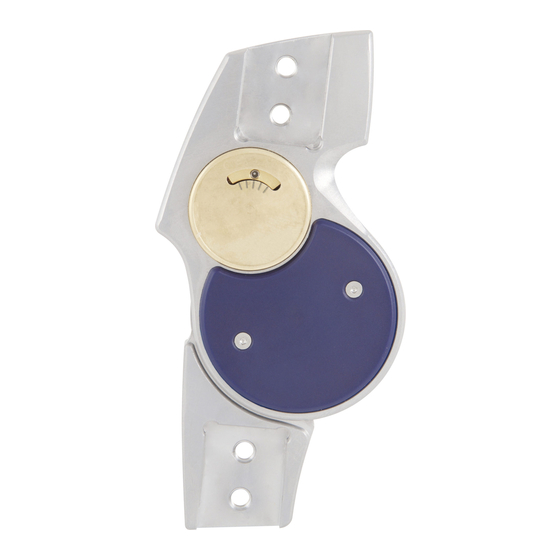
Advertisement
Quick Links
Advertisement

Summary of Contents for Fillauer SPL2
- Page 1 SPL2 Product Manual...
-
Page 3: Package Contents
Package Contents IQ SPL2 Set IQ SPL2 Unilateral 1 SPL2 Joint 1 SPL2 Joint 1 SPC Joint 1 Satellite and Cable 1 Satellite and Cable 1 Inner Hexagonal Wrench 1 Inner Hexagonal Wrench 2 Stickers 2 Stickers 2 Cable Clamps... - Page 4 Overview Parts SPL2 Joint Parts Fig. Part Number Unit Description IQ210L or R Swing Phase Lock 2 Joint IQ110/03 Joint Cover Plate Set IQ110/03/01 Cover Plate Screws IQ110/03/02 Medial Cover Plate IQ110/03/03 Lateral Cover Plate IQ110/04 Joint Screw and Nut Kit...
- Page 5 SPC Joint Parts Fig. Part Number Unit Description IQ120L/R Swing Phase Control Joint IQ120/03 Joint Cover Plate Set IQ110/03/01 Cover Plate Screws IQ120/03/02 Lateral Cover Plate IQ120/04 Joint Screw and Nut Kit IQ120/04/01 Joint Nut IQ120/04/02 Joint Screw IQ120/08 Teflon Bushing Set IQ120/09 Flexion Control Set IQ120/09/01...
- Page 6 Satellite Parts Fig. Part Number Unit Description IQ141 IQ SPL Satellite Complete IQ141/01 IQ SPL Satellite Service Hatch Screw 2.2 x 8 mm IQ141/02 IQ SPL Satellite Service Hatch IQ141/03 IQ SPL Satellite Mounting Bracket IQ141/04 IQ SPL Satellite Mounting Plate Screws 2.5 x 12 mm IQ140/04 IQ SPL Satellite Cable End Block IQ140/12...
-
Page 7: Product Specifications
Product Specifications Usage of the SPL2 knee joint system provides optimum care for patients with paresis/paralyses (e.g. polio) and contributes to a successful therapeutic treatment. This articulating system is meant to compensate weakened or complete failure of the knee extension function. The joint is available in two different versions: a. unilateral joint or b. bilateral joint. - Page 8 Function SPL2 Technical Features The technique of the SPL2 (Swing Phase Lock) joint is based on a simple internal pendulum mechanism, which locks and unlocks the knee depending on the angle of the knee joint in the sagittal plane. During gait, the device locks at the end of swing phase, just prior to heel strike, and unlocks the knee at heel off in preparation for swing.
-
Page 9: Maintenance Instructions
(Mode 1). Cleaning & Disinfection Instructions The SPL2 joint may not be greased, oiled, or lubricated in any way. To clean, use naphtha or similar cleaning fluid or compressed air. Do not use acetone, dilutions or turpentine, etc. - Page 10 When the joint is used in a carbon fiber-reinforced construction, the SPL2 should be disassembled by removing the satellite. Disconnect the cable within the function unit (G) and loosen the IQ set screws (D), loosen the adjustment screw, and gently pull the cable from the housing.
-
Page 11: Function Check
Mode 1. Adjust the proximal adjustment screw (F) on the SPL2 as necessary. Figure A • Check to see if the SPL2 joint lock after swing with the satellite in Mode 1. If it cannot lock,… Adjusting Locking and Unlocking... - Page 12 For this purpose the central button on the satellite is to be pressed for the slider to slid fully down. This is a safety mode in which the SPL2 joint is constantly locked when in full extension (e.g. at home, making many turns, etc.).
- Page 13 Shortening the Satellite Cable First determine the position where the satellite will be mounted on the thigh cuff of the orthosis in order to establish the correct cable length. Bear in mind that the cable should have a slight S-shape. Position the joint in full extension and set the satellite in Mode 3 by pressing the button on Figure 1...
- Page 14 the excess outer cable. The inner steel cable will be shortened in step 13. Now slide the inner cable through the bottom of the swivel connector into the satellite housing and screw the Teflon outer cable onto the swivel. Place the swivel in one hand between your thumb and forefinger and the Teflon cable in the other hand between Figure 5...
- Page 15 Determine the exact position where the satellite is to be mounted on the thigh cuff and contour the bracket if necessary. Mount the mounting bracket on the brace and reattach the satellite using the screws at the front again. Use the provided cable clamps to attach the satellite cable in order to ensure an optimal, flat resting cable run against the thigh cuff of the orthosis.
- Page 16 Fillauer LLC 2710 Amnicola Highway Chattanooga, TN 37406 423.624.0946 www.fillauer.com Fax 423.629.7936 M025/09-02-15/01-30-19 © 2018 Fillauer LLC...
















Need help?
Do you have a question about the SPL2 and is the answer not in the manual?
Questions and answers